
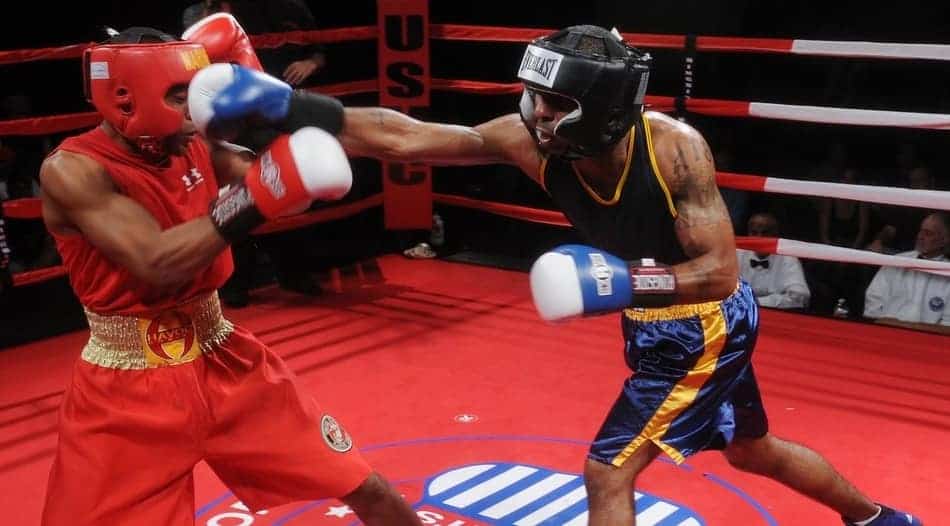
No matter how good is your boxing defense, soon or later you will get hit. Even the best defensive boxers take lots of shots during their fights. Sometimes, because of these shots, they get knocked down or even knocked out. But still, there are some things you can do to DRAMATICALLY decrease the impact of the punches even if you get caught clean.
Most of the methods that we will discuss in this article, will teach you what to do to lessen the impact of the punches while the others will teach you to AVOID them. Which is actually the best way to deal with the blows.
This article is about every basic thing you can do. But if you want really advanced and unorthodox techniques, after you finish reading this article make sure to check out this one: Can you Block Punches with your Elbow in Boxing? where I talk about advanced elbow blocking techniques.
Where are the most dangerous places to get hit?
There are 4 places where no boxer wants to get hit in a fight. It’s good to know these places so you can prevent getting punched there.
Chin
After a hard punch in the chin, your head will accelerate and then decelerate very quickly. That will make the brain slam into your skull which can cause a trauma. If the trauma is too severe you can lose conciseness. That’s how the boxers get knocked out.
You can get hit in the chin by any kind of punch, but most dangerous are the hooks and the uppercuts, because of the angle from where they are coming.
Behind the ear
There are a lot of nerves placed behind the ear. Also, the skull is thinner there, than from example on the forehead, which makes it really dangerous to get punched there. The place behind the ear is another “knockout spot” in which many boxers aim during a fight. Your opponent may catch you there, by throwing overhand punches, hooks, or even straights if he has an angle advantage.
Nose
A hard hit in the nose can break it or make it bleed. That can cause breathing problems and slow you down. It will also motivate your rival to press forward because of the visible damage he did on you.
After such a blow, your eyes may water. That is a side effect of a punch in the nose which will reduce your ability to see the shots. The most dangerous punches for your nose, during a boxing match, are the straights (the jab and the cross).
Liver
With the exception of the hits below the belt, the worst place on your body where you can get punched is in the liver. A powerful punch there can cause an excruciating pain and knock you down. And it can be really hard to recover from a liver punch, fast enough, so you can continue fighting. The most effective punches to damage the liver are the left hooks and the left uppercuts.
1. Watch the punches
When you see the punch coming, its impacts will be much lower compared to when it surprises you. That’s because your survival instincts will naturally prepare you to take it. Your neck muscles will tighten, your head will take a better position and also your nervous system will prepare itself for the blow.
On the other hand, the punches you don’t see, hurt the most and usually they are the ones that knock you out. That’s why, during a fight, the pro boxers always keep their eyes on their rivals.
In the beginning, it will be hard for you to keep your eyes open while someone is punching you in the face. Some newbies even blink when they throw punches. The exercise that helped me to stop doing that was leaning back on punches. To do it you just need a sparring partner who needs to throw light punches to your head while you are leaning back just before they hit you. By doing this, you will stop blinking, and it can also help you to stop fearing being punched.
2. Keep your jaw closed
If your mouth is wide open, while you get hit, you are not only risking to break it but also to get knocked out. When are tight, the jaw muscles can absorb some of the force of the punch and reduce its impact.
So keep your jaw closed all the time – when you get punched and also when you throw punches. That’s another common mistake and sometimes you may not realize you are making it. If you aren’t sure, ask your coach or sparring partner if your jaw is closed while you spar. Or even better – record some of your sparring. Thus you can detect other issues such as bad punching technique, movement or defense problems.
3. Roll with the punches
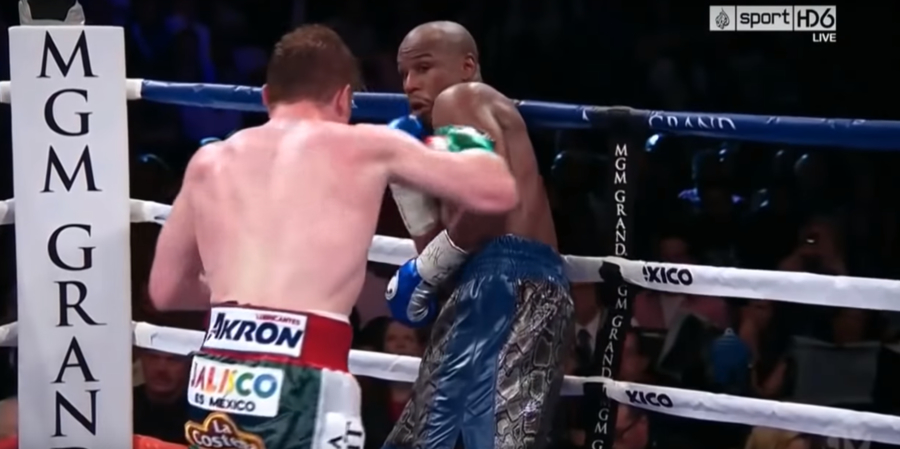
“Rolling with the punch” means to go with the motion of the blow. By doing this, you will significantly lessen its impact. This is a more advanced technique but still, you can learn it even if you are a beginner.
The best way to do this is to ask someone in the gym (your coach, or a sparring partner) to throw 50-60% power punches at you. Then try to move your body or head in the same direction as the punch. If it’s a hook to the head coming from your left move your head left and vice versa. If it’s an uppercut lean back. Use the same principle to roll with the body shots.
Tip: If you are a beginner, don’t lean back if your opponent throws straight punch at you. Because if you don’t measure the distance correctly the shot may still catch you and get you off balance. It’s much better to slip such punches.
4. Slip the punch
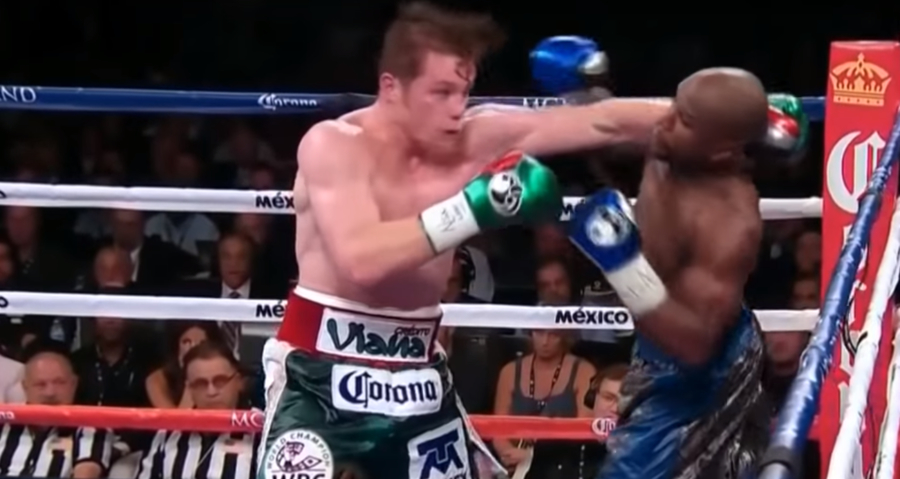
As I already stated the best way to deal with the punches is to avoid them. And if your someone is throwing straight punches (jab and cross) at you, you can do this by slipping them. That means to move your head off the centerline and making the other fighter miss.
You can slip the punch “outside” or “inside” depending on the direction from where the punch comes and on the direction where you move your head. For example, if your opponent is an orthodox boxer and throws a jab, and you move your head to your left, that’s OUTSIDE slipping. On the other hand, if you want to slip inside such punch, you need to move your head to your right.
Think of it this way – to slip outside a right punch (right cross or a jab, thrown by a southpaw), you need to move your head to your right. And to your left, if you want to slip a left punch outside. And the opposite if you prefer slipping inside.
Depending on the situation, you can choose how you want to slip the straight punches. Outside slipping will protect you from crosses and hooks but can make you vulnerable for uppercuts. While when slipping inside your opponent may catch you with straight punches and hooks.
Again, you can train to slip the punches with a sparring partner using light punches.
Tip: When slipping bend your knees a little bit. It’s also important to drop your shoulder forward. By doing this you will protect your chin and add some extra power to your counter punches.
5. Bob and weave
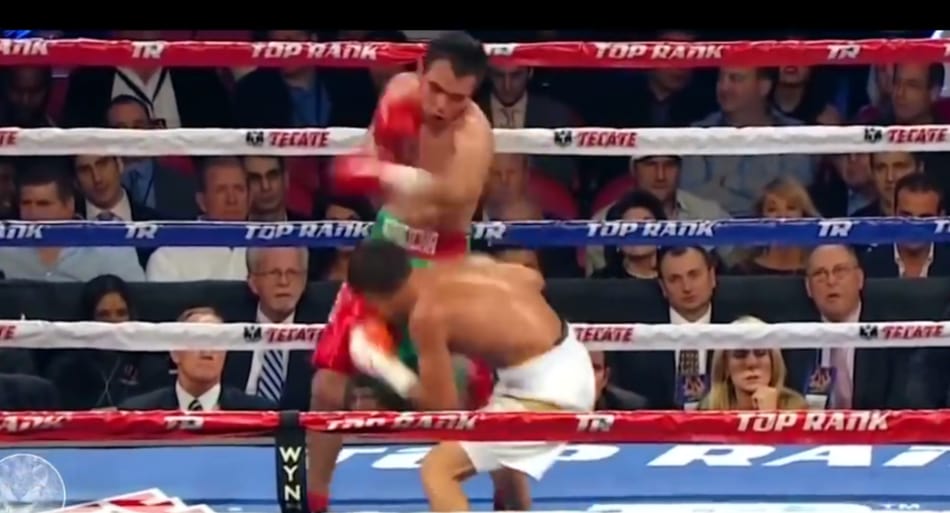
Ok now you know how to avoid the straight punches, but what about the hooks?
The problem with the hooks is that you can’t just “slip” them, because they will still catch you. That’s why you need to go underneath them.
In boxing that’s called bobbing and weaving. To do it, you need to time the hook, to bend your knees and duck your head a little bit just enough to avoid the punch. After that, you can come back up with a counter punch. A great combination is – bob and weave followed by a lead hook to the head. It’s a really effective combo. By using it, Joe Frazier knocked down Muhammad Ali in their first fight.
6. Parry the shots
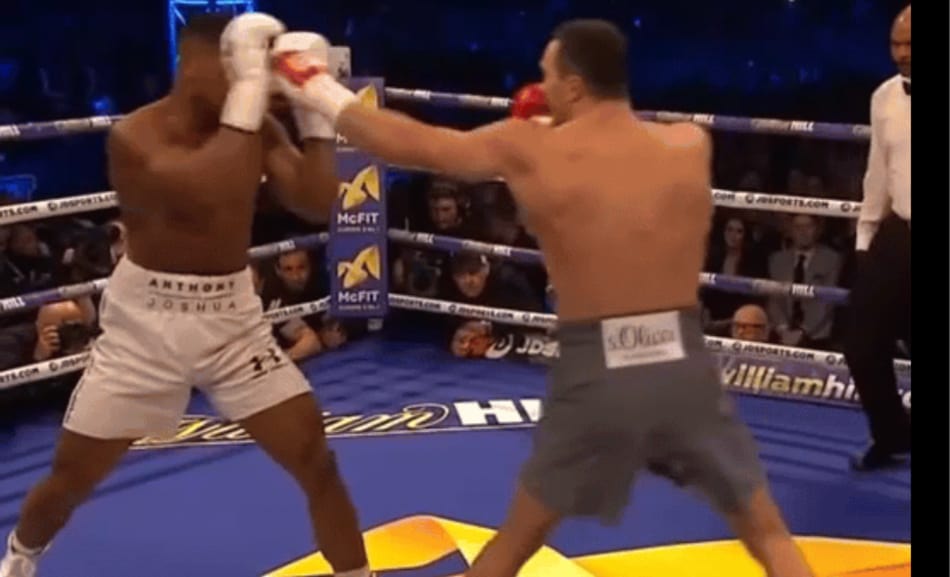
To parry, a punch means simply to deflect it. It’s a really effective way to stop punches (especially straights). You can push them away from you and then counterpunch the other boxer when he is unprotected.
For example when someone is throwing jabs at me, what I like to do is to push the jab down, and then counter with a right cross. It’s a basic technique but it works pretty well.
7. Train your neck and jaw muscles
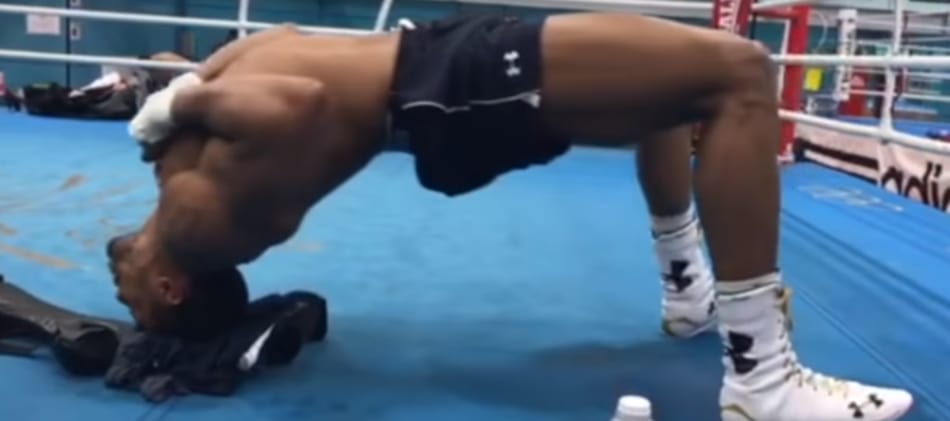
The neck and the jaw muscles are the ones that can deaden the head punches. So it’s really important to train them. Here are my favorite exercises to do that:
- Howling at the moon (jaw and neck)
- Neck Bridges
- Exercises with Head Harness for resistance training
8. Keep the chin down and the shoulders up
No one wants to get hit in the chin. Such shots can hurt you, knock you out or even cause long-term damage to your brain. So it’s a good idea when fighting or sparring, your chin to be tucked in, and your shoulders up, so they can protect it (especially when someone is throwing combinations at you).
9. Take the punch on your forehead
There are situations where it’s too late to block, parry or avoid the punch. Then all you can do is just to take it. But still, you can do something to decrease its impact. In such cases, try to take the punch on the top of the forehead, or on the corners of your head (the spot 3-4 inches above the eye). There the skull is very thick and strong and sometimes you can even injure your hard by hitting someone there.
And again, do this only if you don’t have another choice. Because regardless of how you take the punches, it’s not a good idea to get hit in the head.
10. Do lots of sparring
By doing sparring you will improve your distance control, your timing, and defense. But it will also help you to stay calm and don’t panic when get hit. That’s why the sparring is the best boxing exercise – it’s good for both – the physical and the mental aspects of the game.
If you are a beginner, you can start with light sparring (just train techniques, without much power). And when you gain some experience you can start doing hard sparring. Of course only if you and your sparring partner are willing to do it.
11. Use mouthguard

The mouthguard is an essential part of the equipment of every boxing enthusiast. It will prevent your teeth from rattling against each other after taking a punch. And it can also absorb some of the force of the blows (especially of the uppercuts).
The other benefit of using mouthguard is that it will make you feel more confident when sparring (just because you are better protected). Which will help you overcome the fear of getting punched – another common beginner’s problem.
12. Use big gloves
The bigger the gloves are, the less damage they do. Also if you wear big gloves you can defend yourself better. So when doing heavy bag work, you can use smaller (12-14 oz) gloves and when sparring – 16 oz or even 18 oz (if you are a big guy) gloves are a great way to decrease the impact of the shots.
13. Use headgear
Some people argue that the headgear actually increases the concussions and brain damage. They say that’s because it blocks your vision and also gives you fake confidence which makes you willing to take more shots. No one knows if that is true. What we do know is that it can really reduce the cuts on your face. Some headgears even protect your nose, which is great if you often get a bloody nose when sparring.
If you really love boxing and want to train it but outside the gym, you don’t want to look like a boxer, I highly recommend using headgear.
14. Be ready to counterpunch
Every time your opponent throws a punch at you, he is exposed for counters. And every time you slip, parry or block the punch you have an opportunity to land some shots by yourself. But if you want to do this, you need to be really quick. So be ready to fire back quickly and don’t hesitate even for a second.
Another situation where you can counterpunch is when the other boxer knocks you down or stuns you after a hard blow and starts looking for the knockout too much. By doing this, he may leave himself open, and you can capitalize on that. Many boxers have been knocked out in similar situations – after they hurt their opponents and impatiently tried to finish them.
15. Tighten your guard
If the other fighter starts throwing flurries at you, and you can’t slip or parry all the punches, it’s a good idea to go into a defensive shell. Here is how to do it:
- Put your hands on your forehead – your index fingers need to be on your forehead about 1 inch above the eyebrows creating something like a heart shape
- Keep the elbows in tight – so you can block body shots or uppercuts
- Look at your opponent through your gloves – to see the coming shots
It’s important to not block your vision entirely because you won’t be able to see the punches. Also, may not notice if your rival changes his position. For example, while you are covered up, he may try to move behind you, where you can’t fire back protect yourself effectively.
16. Stay balanced
Bend your knees a little bit and use a wide stance when the other boxer tries to land a hard punch on you. That way your center of gravity will be closer to the ground and you will be much more stable. Also, don’t stay squared up. Try to stay in a more sideways stance. Thus your opponent won’t be able to get your off balance and knock you down easily.
17. Breath out
Try to breathe out especially for body shots. By doing this, you will prevent your wind getting knocked out of you. Which is one of the worst things that can happen, especially in the later rounds where you need every breath of air.
18. Take an angle advantage

In boxing, to take an angle advantage means to take such a position where your opponent can’t hit you easily, but you have many options to land punches. The most obvious example of an angle advantage is when you are behind the other fighter. From there you can land hooks to the head or target the body while he can’t even touch you.
It’s hard to get there but it’s possible when the opponent covered himself up and isn’t able to see how you are moving behind him. Vasyl Lomachenko does that all the time to his rivals.
Another example of that is the outside foot advantage when two fighters in opposite stances are facing each other. In such cases, the boxer whose lead foot is positioned outside the other boxer’s lead foot has an advantage. That’s because he is off the center line and is in a safe position from straight punches, but he can easily land rear hand strikes.
19. Use the ropes

If you watched the fight between Muhammad Ali and George Foreman you probably noticed how Ali is staying on the ropes and is leaning back on them. By doing this he is using the ropes to absorb some of the power of the punches and also to help him lean back more without losing balance.
You can use the ropes also to support you when you are really hurt and you aren’t sure how long you can stay on your feet. I know that to be pressed against the ropes on purpose doesn’t sound like a good idea, but is better than staying at the center of the ring and eventually getting knocked down.
20. Know the combinations
Chances are the most boxer against which your spar or fight will use mostly basic combinations. I mean combos such as 1-2 (jab-cross) 1-1-2 or 1-2-3 (jab-cross-lead hook). If you watch your opponent you may notice which are his favorite combinations. That way you can predict what is coming next and you will be ready to block it or dodge it.
21. Watch out for the big punch
The purpose of most of the punches isn’t actually to hurt you. No boxer can throw blows using all of their power all the time. That’s ineffective because it can make the boxer gas out quickly or make him fall into counterpunches.
That’s why the most experienced fighters will throw light punches at you, just to make you react (by covering yourself, slipping etc.) and then catch you off guard with a hard blow when you aren’t expecting. To avoid that from happening I recommend not reacting too much to the less powerful punches. Wait for the hard ones.
For example, don’t go into a defensive shell just because of light jabs. Try to just parry them. Because your opponent may want to make you think for the head punches and then land a powerful shot to your body when you aren’t expecting. And that can really hurt.
22. Circle around your opponent
This tip is really simple but also really important. Have you ever noticed in a boxing match how boxers are circling each other? Usually, they are doing that to avoid the power hand of their rival.
For example, if you are fighting against a southpaw, you should constantly (or most of the time) move to your left. That way, you will avoid the left hand of your opponent which may be his main weapon. And even if he manages to hit you, the impact of the punch won’t be great, just because of the direction in which you are moving.
But sometimes it isn’t so easy to do that. For example, when you are pressed against the ropes or in the corner you can’t just circle away. In such situations, you can use side steps to get out of there.
Another situation where is hard to avoid the power hand is when your opponent comes too close to you and starts fighting from the inside. If that is the case, you can create some distance using your lead hand and footwork. Very similar to what Anthony Joshua did in his fight against Parker, every time when Parker tried to engage.
